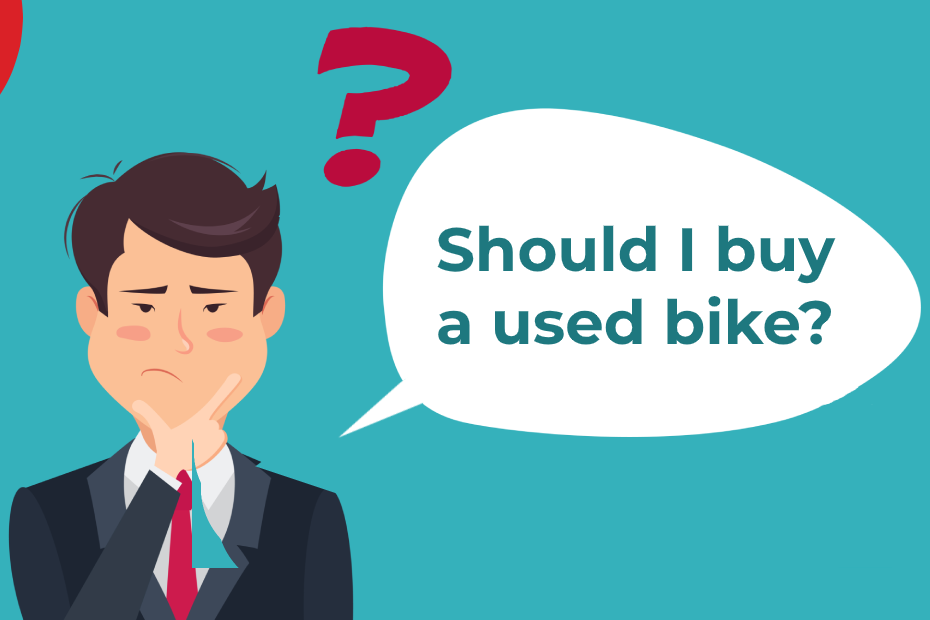In a previous post, I outlined some of the decisions required when looking for your e-bike. One of these decisions was whether to buy a used electric bike or a new one. The current shortage of new e-bikes being experienced globally suggests it is timely to explore if buying a used electric bike is a good option.
Reasons for buying a used electric bike
There are several reasons why buying a used e-bike may make sense for you.
Similar to buying a used motor vehicle, you can generally buy a used e-bike at a lower cost. Like a motor vehicle, e-bikes depreciate. Buying a used e-bike may be a lower cost alternative to buying a new bike.
The caveat, of course, is that right now there is a high demand for bicycles of all types, including e-bikes. There is a shortage in new e-bikes meaning that demand is outstripping supply. This means that for the next year or two potential cost savings may not be available. Locally, there are unconfirmed reports of one year old bikes being resold at a price equal to or higher than the original purchase price.
Another reason for considering buying a used e-bike is based on how you plan on using it. If you plan to use your e-bike only a couple times per month or occasionally for weekend camping trips, buying a used e-bike makes sense. For these uses, having the newest technology, features or a specific brand simply may not be that important.
As well, you may be concerned about the environmental impact of buying a new e-bike when a used one will suffice. Recycling an existing e-bike that satisfies your needs can be a good option.

Why buying a used e-bike can be challenging
As explored above, there can be good reasons for considering buying a used electric bike. But there are some pitfalls and challenges that may make you think twice.
1. Risk of buying a stolen bike
In many areas, organized bike thieves sell stolen bikes through local online channels like Kijiji, Craigslist, and Facebook Marketplace. A clear sign that an e-bike seller is selling a stolen bike is the price being advertised. If the price is too good to be true, particularly in today’s market, be very wary.
For tips on how to avoid buying a stolen bike, scroll down to the end of this post.
2. Buying someone else’s problem
Motor vehicles aren’t the only product that have the proverbial lemons. Is the seller off loading their problems – electrical or mechanical- onto you?
Unfortunately, the e-bike marketplace is a bit of a wild west with few standard manufacturing or design standards. There are a lot of e-bikes on the market that aren’t very well designed or manufactured. It is important to get a good understanding of why the current owner is selling.
This is particularly important as the original warranty is often not transferrable to a new owner. Even if it is, check the details to understand what is covered under warranty.
3. Buying old technology
Even if having the latest technology isn’t important to you, buying a used e-bike with older technology may not be a good option. E-bike technology is progressing rapidly as battery quality is improving and e-bikes are becoming lighter. These are important improvements that can extend the range of your e-bike and make it easier to ride or transport.
4. Servicing a used e-bike
As previously indicated, there are literally hundreds of e-bike brands available. They range from well established brand names like Trek, Specailized, or Giant to e-bikes from unknown online retailers. It’s not unusual for a company or even an individual to buy a container of e-bikes with their name on it, resell them and then disappear.
The challenge with these e-bikes is that many cannot be serviced by local bike shops. A quick survey of local bike shops in Calgary indicates that most will not service e-bikes they don’t sell or don’t use name brand parts.
A big part of servicing e-bikes is the ability to get replacement mechanical and electrical parts, including replacement batteries. As the battery is a vital component, not being able to get a suitable replacement means you’ll end up with an expensive, heavy regular bike.
If you are able to work on your e-bike and can find replacement parts, servicing a used e-bike may not be an issue. But for many new e-bike owners this could be a problem.
5. Battery replacement
One of the most important and expensive components of an e-bike is the battery. While most new batteries can be fully recharged 500 – 1000 times, all batteries will eventually need to be replaced at a cost between $500 to $1000.
The challenge with a used e-bike is you don’t know the number of charge cycles experienced, how well the battery has been maintained or if a replacement battery can be purchased.
Before buying a used e-bike, it is advisable to determine both the availability and cost of a replacement battery. You may find that any savings in the purchase price could evaporate if a new battery is required or a replacement battery can’t be found.
Some additional tips and suggestions can be found in this YouTube video. While it focuses on e-mountain bikes, many of the suggestions apply to all e-bikes.
Suggestions for buying a used e-bike
There are a number of common sense things you can do to minimize some of the pitfalls outlined above.
- Ask to see the original sales receipt. Reviewing this will confirm both ownership and help determine if the asking price is reasonable.
- If the seller doesn’t have the original sales receipt, the key for the battery or service records, walk away as it is likely the bike is stolen.
- Review service records. This will provide you some assurance the bike has been maintained and there is a local shop that can continue servicing the bike. You can check with this bike shop to determine if there are any issues with the brand you are considering buying. As well, they should be able to test the battery and provide a cost estimate for a replacement battery if required.
- Take a thorough test ride that is more extensive than riding up and down the street. It is critical to take the bike for a long enough ride that allows you to get a feel for the bike, listen for any unusual noises, and test its performance.
Some of the things you should be looking for in the test ride include:
- Ensuring all the power assist levels work
- Assessing the bike’s ability to handle hills
- Determining if the bike is the right size and you can handle the bike’s weight
- Ensuring you can easily get on and off the bike
- Checking the operation of gears and brakes
- Assessing if the controller has the functions you want and is easy to use
5. When possible, have the bike inspected. While getting an inspection isn’t always possible, having a trained bike mechanic provide an estimate for any potential repairs or flag issues will provide a realistic expectation of future repair costs.
So does buying a used e-bike make sense?
The short answer is – it depends.
There is risk in buying a used e-bike if past service records aren’t available, ownership can’t be proven, the bike is older, or it can’t be serviced.
However, if you are able to do your own bike maintenance or know a reliable bike mechanic and can find replacement parts, buying a used e-bike can be the right option for you.
If you have had experience buying a used electric bike, please share how this has worked out for you and if you have any additional suggestions when looking for a used e-bike.

Good information, I would add that almost all of the mainstream bike manufacturers are now offering e-bikes that conform to the 32km no throttle configuration. They only offer assistance when you are peddling. Hence the term pedal assist. Mainstream companies adhere to this like Trek Giant Opus Specialized etc. Like you mentioned there is a lot of iffy stuff flooding the market. Buyer beware 👍
Thanks Jim. The 32 km limit is for Class 1 e-bikes. You can get more details on the three classes in the post on e-bike regulations.
I think that eventually standards will be in place and fewer bike suppliers. Until then “caveat emptor”.
Thanks Volker for another well written and informative post. I have a Gazelle Medeo T10+ and I thought it was possible for a shop to run an analysis of the battery to tell how many “charges” the battery has had. That would be a big help to the prospective buyer of a used e-bike.
The caveat is that bike shops need to have access to the software that can test the battery so they can’t test all manufacturers.
Volker, your words of caution about the bikes of dubious quality that are flooding the market are timely. I follow a Facebook group called Ebike Cyclists over 60 where a constant stream of new e-bikers post about the bikes they have just bought, nearly all of them from companies I’ve never heard of. Usually, these bikes have been bought online, with no opportunity for a test-ride or a proper fitting.
Some of their proud owners are going to be disappointed, or possibly stranded or even injured, by these bikes, and many of these manufacturers will not provide any support, let alone parts.
Call me old-school, but I think it’s best to stay away from the online opportunists and stick with e-bike manufacturers with a proven track record for quality, a concern for reliability and safety, and a commitment to fair labor practices.
On top of that, buying from a reputable retail store, preferably a local independent one, creates a relationship with a source of carefully chosen products, expert advice, competent servicing, and tips about the best local bike clubs and places to ride.
Caveat emptor!
I also belong to several groups where members express a wide range of opinions and experiences with their bikes. As new e-biker, I was most comfortable buying from a local bike shop rather than online. Maybe this will change with my next purchase.
Volker, thank you for a very informative post. I have not made the foray into the e-bike world yet, so really appreciate your write ups.
Thanks Joan. If you do find yourself in the market. let me know.